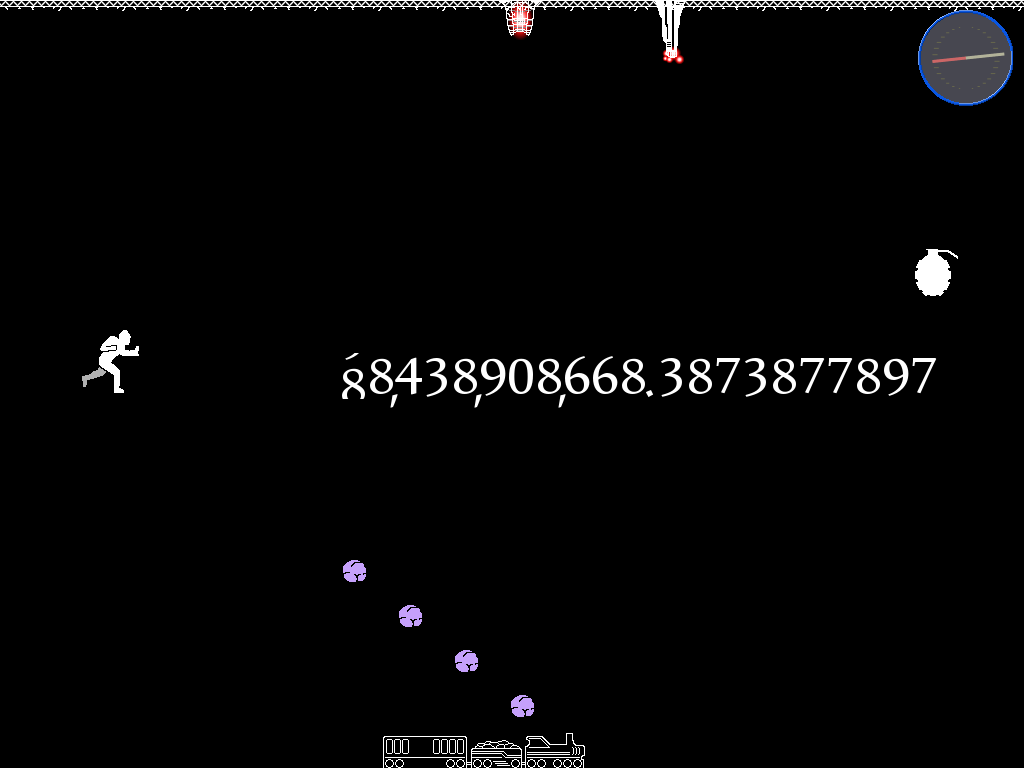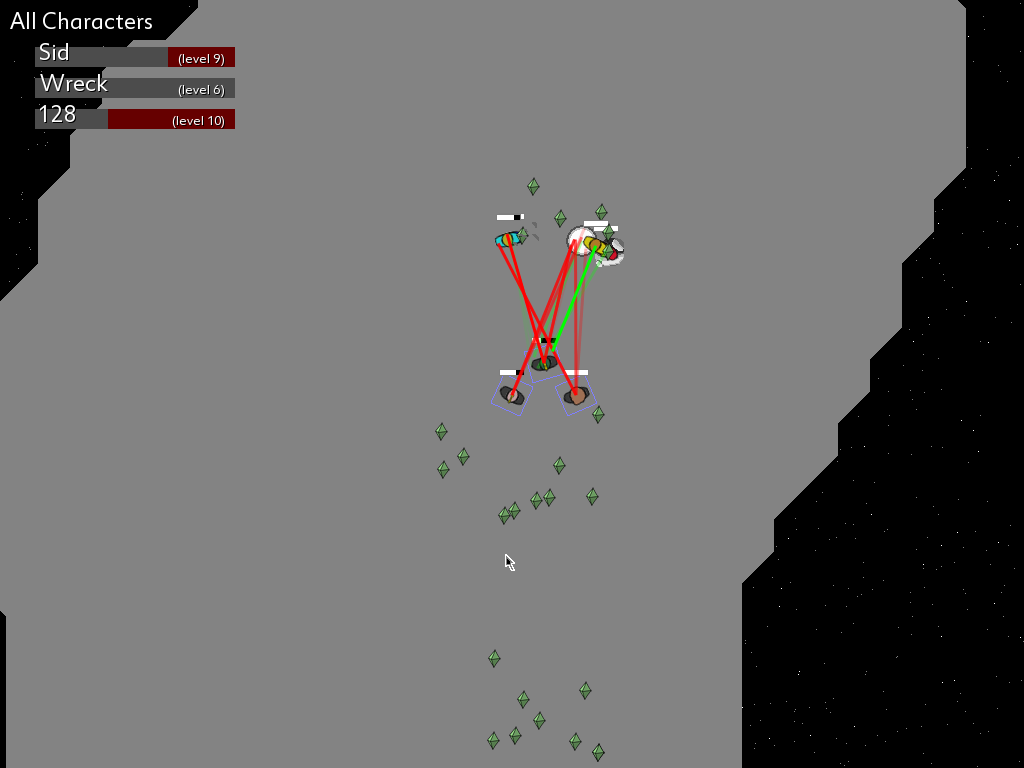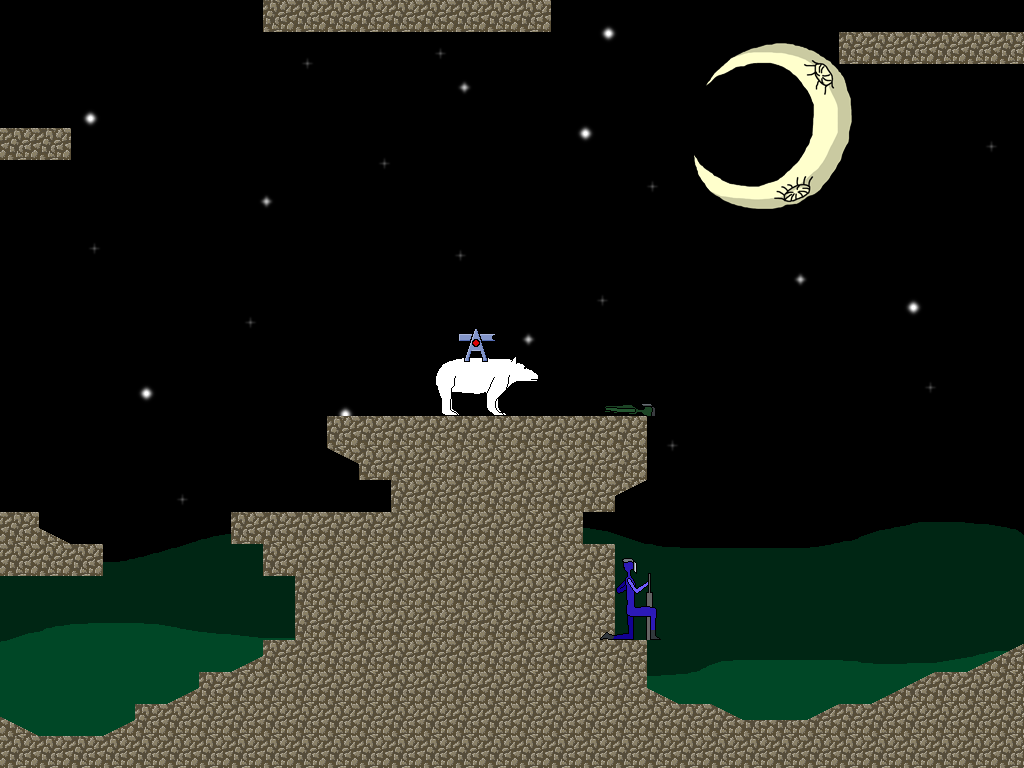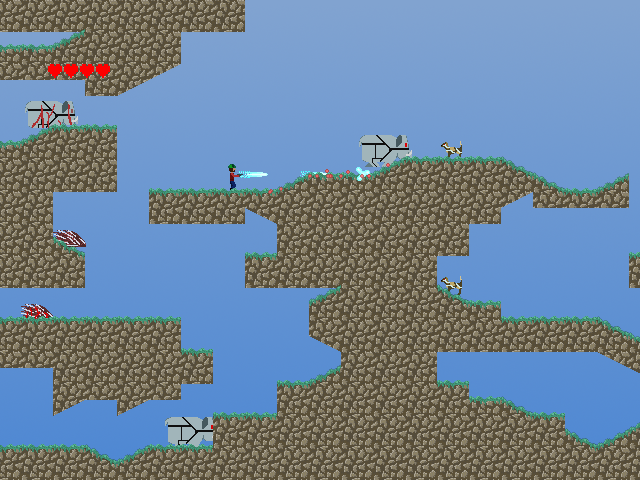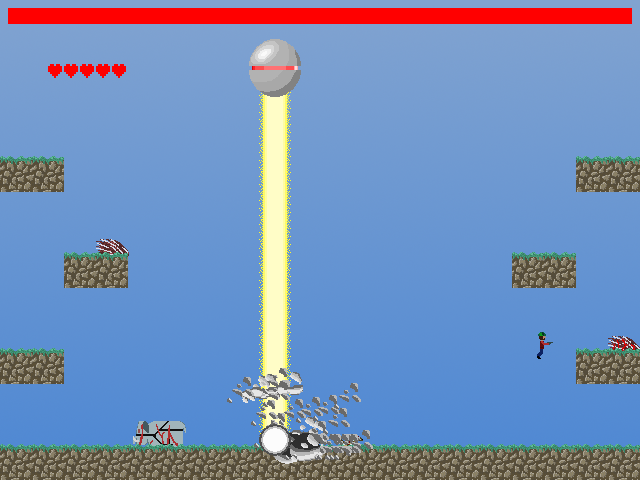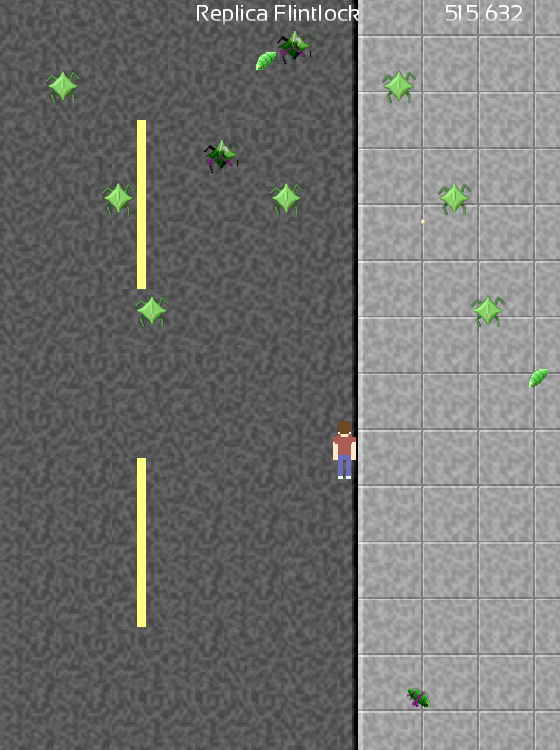Alright, time for the postmortem.
The Technical Side
Qualified success.
I intentionally used a small loophole in the rules – I spent a few days beforehand building a capable platformer library named Scaffold. I've never actually written a platformer before, so I wanted to give myself a bit of leeway to fuck things up. This was probably a good idea, since without that I would have had to cut stuff that I wanted to put in. I don't feel bad about this at all, since I'm going to be using the library for other games in the future (in fact I'm already working on some much-needed improvements and tweaks to it).
I spent about three days working on the game design – after the third day, the level fundamentally didn't change. I spent about two days on the intro cutscene, ending cutscene, art, and sound, and one day rebuilding some of my libraries and tracking down an awful bug that was causing crashes. Turned out to be a library error with Luabind, with the only fix currently available on a mailing list. Sigh. So a total of five game-related days and one SNAFU-related day.
I keep pushing myself to do wackier and weirder stuff with Lua. I split the game code into two files and tried to make a good connection between the two. I'm pretty sure I failed on this, and that's where the data leaks and slowdowns come from. Something to fix with Scaffold v2.
I'm abusing coroutines more and more as I go, and they just keep getting better. Coroutines are absolute gold. If you're trying to do any kind of scripting or AI in a language without them, just stop now and find a language that has them. I'm serious here, I whipped out things in five minutes that would have taken an hour or two in C++. My code is grim and nasty, but shockingly maintainable and compact, so as far as I'm concerned the coding of this is a great success, at least on the Learning Experience front, which is why it's kind of a qualified success for the actual game.
The Artistic Side
You may have noticed there's just a little bit more custom art in this than in No Such Thing.
No Such Thing had a total of 23 images, totaling 177kb, with 159kb of this being the backgrounds. Fluffytown has 76 images, 226kb, 187kb being backgrounds of various sorts. Fluffytown also has those images divided roughly into 14 animations (No Such Thing's only animation was the explosion) and contains 17 sound effects compared to NST's four.
And yet, I spent about the same amount of time on art and sound. I'm getting better at this, clearly.
I botched the resolution a little bit. I'd meant to make it a 320×240 game, only I got confused sometime between making the hearts and the elephants, and I ended up making it 640×480. That was a mistake – in retrospect I think 640×480 is exactly the wrong resolution. At higher resolutions you can get away with solid colors and aliased shapes, at lower resolutions you can get away with more abstraction. 640×480 is this annoying little niche where you can't do Iji-style art and you can't do Spelunky-style art. I'm not going to make that mistake again.
I have a lot of trouble with shapes. I am just flat-out not good at doing shapes on a computer. As bad as I am with pencil and paper art – and I'm pretty damn bad – I can at least get shapes to do what I intend after a few tries, and I just can't get that working on the computer. I've ordered a cheap scanner and I'll be trying to do sketches, scanning them in, and tracing from there for my next project (assuming I do sprite art, I'm seriously considering just doing opengl effects for whatever comes next.)
All that said, I'm rather proud of the art. For someone who sucks at art it's not bad at all.
I was hoping to include several parallax layers in this level, as I consider parallax to be one of those real easy things you can do with incredible results. My "level editor" was not up to the task, however (if you go to line 341 in main.lua you can see what I mean by a "level editor" – I recommend using a monospaced font with word wrapping off). Also, while my engine supports non-grid-aligned objects, my "level editor" fundamentally does not. I'll be putting something better together for Scaffold v2. I want my parallax.
The Gameplay Side
Alright, here's the interesting bit :)
The weirdest thing about this game is the fact that none of my testers figured out the gimmick. Not one. I was ready to write it off as a failure of a test, only once I posted it, a ton of people figured it out – some even before the end screen. I'm not quite sure what happened here. Maybe my testers, thanks to me being right there online waiting for a response, didn't bother trying to look into it too deeply. Maybe the addition of more sound effects and more thorough graphics – which my testers didn't have – made it immersive enough that people started noticing the details, and not just the gameplay. Or maybe my testers are just kinda dumb :v:
The gimmick is indeed the fact that it tracks exactly what you kill and leaves appropriate piles of bleeding coffins on the side of the screen once you end the game, as well as removing the corresponding happy living creatures.
After No Such Thing I found myself thinking a lot about gimmicks that somehow encourage the player to do something counterintuitive. In NST, you merely tried to avoid getting hit, but it was kind of bizarre because getting hit gave you a more awesome weapon. A lot of people just wanted a really big weapon, and so my encouragement of score just flat-out did not work for them.
In Fluffytown I was going for a much subtler incentive. I wanted to see if I could get people to challenge themselves without being explicitly told "hey you should go try this". I also wanted to challenge myself – I tend to want to force the player to play the game "the right way", and in Fluffytown . . . well, if you want to go on a homicidal rampage, that's A-OK. Besides a lot of bloody coffins, the game will let you, and if you find the sight of a blood-soaked hill pleasing and enjoyable, more power to ya.
Overall, I think this actually worked quite well. Some people went back and tried to do it "the hard way", some didn't notice and just flat-out beat the game. I'm actually fine with this. At some point, you have to acknowledge that your players might not notice all the cute subtleties and jump through all your flaming hoops. Everyone seemed to have fun with the game – some people just extended their fun further than others.
That's cool. I like that.
In terms of difficulty, I got a lot of comments that the game was pretty tough. Amusingly, these were invariably followed by "but I beat it anyway". I think this means it was exactly the right toughness.
Summary
After some testing, I was pretty sure it was going to be an epic flop. After reading a bunch of comments, it wasn't. Clearly I need to have more confidence in people. I think there's a self-balancing aspect with obtuse plotlines – if the plot or the Ultimate Ending is obscure or difficult, the people who figure it out will really love it. (See: Cave Story.) By beating your player over the head with it like No Such Thing did, alright, everyone's going to see it, but nobody's going to care about it. Fluffytown got people emotionally invested.
Now I need to figure out what game to do next – I've got two ideas, both of which I'm pretty sure I'm not able to do justice to yet.

